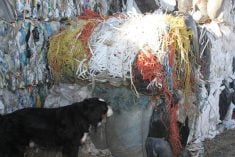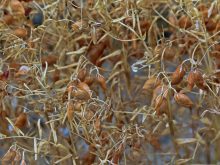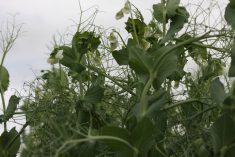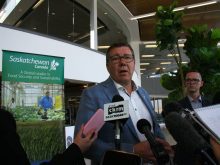Recent rain and snow in parts of the Prairies notwithstanding, Environment Canada says the next three months are likely to be warmer and drier than usual.
But senior climatologist Dave Phillips wouldn’t bet the farm on that forecast.
“I wouldn’t ever tell a farmer to look at the seasonal forecast alone,” he said April 12. “There’s just not enough skill in it.”
Phillips said Environment Canada issues the forecasts, more properly called outlooks, because people ask for them. However, the predictions are not accurate enough to influence decisions such as vacation times or what crops to grow.
Read Also

Alberta looks for agricultural plastic management input
Alberta provincial government giving agriculture industry a say through survey in shaping future plastics management
Instead, the three-month outlooks, based on 40 forecasts updated daily, are designed to indicate a personality or character of the season ahead, Phillips said.
The spring outlook issued for April, May and June shows the entire country will be warmer and drier than normal. Only a small pocket in southwestern Saskatchewan could see normal precipitation, according to April 1 information.
It’s easier to predict temperature than precipitation, Phillips added. Precipitation forecasts for 90 days could be accurate for the first 80 and the last 10 days could “blow the forecast out of the water.”
Britain has abandoned its seasonal forecasts this year and is instead issuing monthly forecasts because too many people misinterpreted them, Phillips said.
“If I was a grower, I’d take a peek at the seasonal forecast … but I’d be governed by the soil moisture conditions at the time,” he said.
There was little recharge of soil moisture over the past winter, he said. 2009 was an odd year with a cold spring, dry summer, wet fall and dry winter.
Phillips said precipitation at this time of year is helpful, whether rain or snow.
Last week’s snow in eastern Alberta and central Saskatchewan was welcome, but the 100 km/h winds were not.















